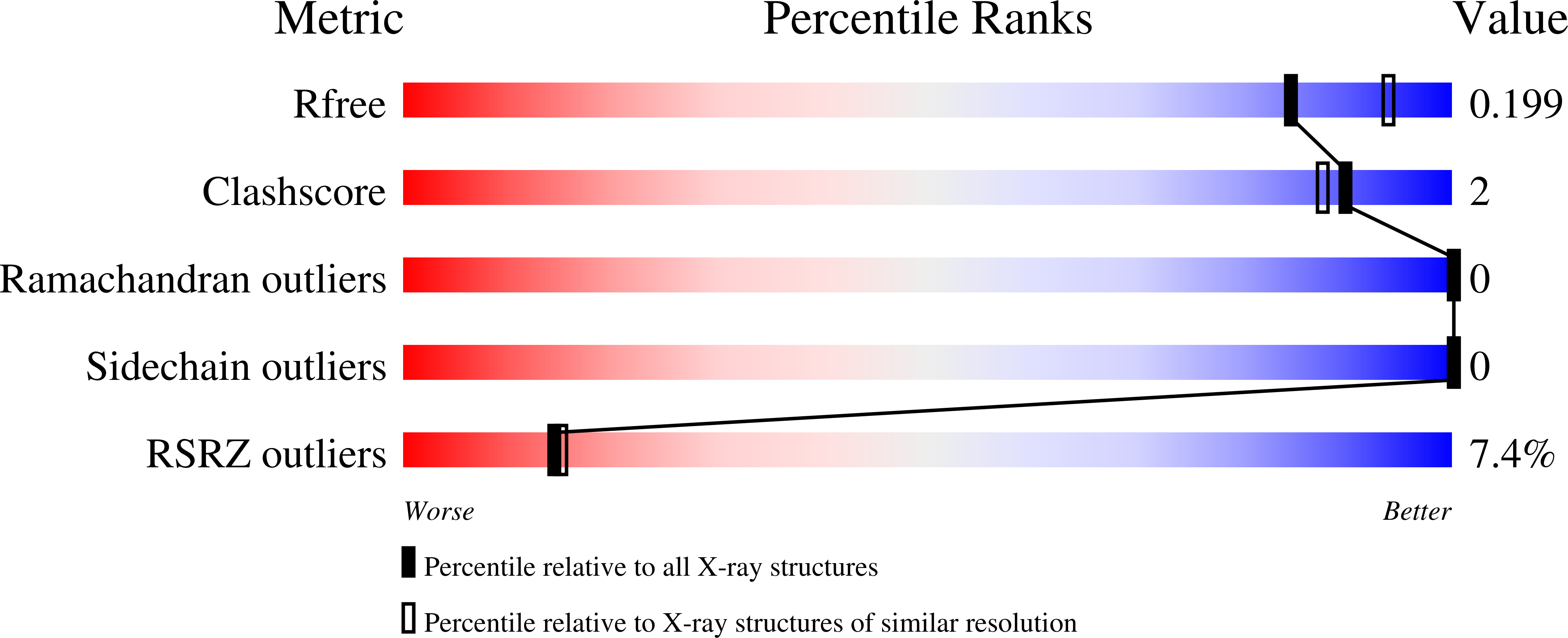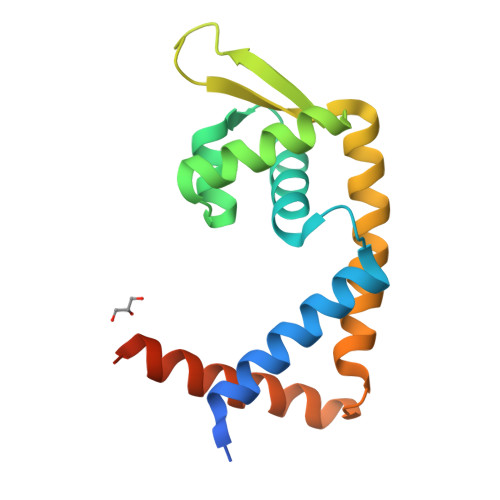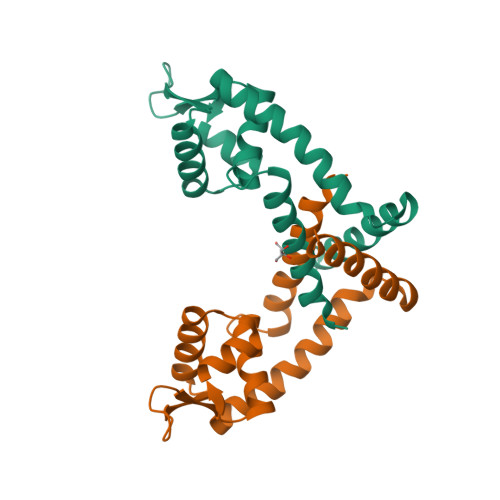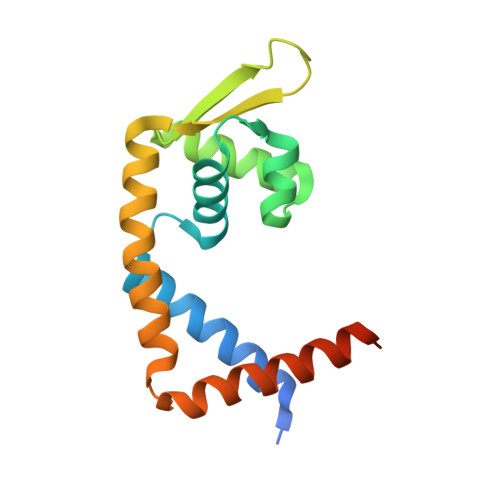Study of PcaV from Streptomyces coelicolor yields new insights into ligand-responsive MarR family transcription factors.
Davis, J.R., Brown, B.L., Page, R., Sello, J.K.(2013) Nucleic Acids Res 41: 3888-3900
- PubMed: 23396446
- DOI: https://doi.org/10.1093/nar/gkt009
- Primary Citation of Related Structures:
4FHT, 4G9Y - PubMed Abstract:
MarR family proteins constitute a group of >12 000 transcriptional regulators encoded in bacterial and archaeal genomes that control gene expression in metabolism, stress responses, virulence and multi-drug resistance. There is much interest in defining the molecular mechanism by which ligand binding attenuates the DNA-binding activities of these proteins. Here, we describe how PcaV, a MarR family regulator in Streptomyces coelicolor, controls transcription of genes encoding β-ketoadipate pathway enzymes through its interaction with the pathway substrate, protocatechuate. This transcriptional repressor is the only MarR protein known to regulate this essential pathway for aromatic catabolism. In in vitro assays, protocatechuate and other phenolic compounds disrupt the PcaV-DNA complex. We show that PcaV binds protocatechuate in a 1:1 stoichiometry with the highest affinity of any MarR family member. Moreover, we report structures of PcaV in its apo form and in complex with protocatechuate. We identify an arginine residue that is critical for ligand coordination and demonstrate that it is also required for binding DNA. We propose that interaction of ligand with this arginine residue dictates conformational changes that modulate DNA binding. Our results provide new insights into the molecular mechanism by which ligands attenuate DNA binding in this large family of transcription factors.
Organizational Affiliation:
Department of Molecular Pharmacology and Physiology, Brown University, Providence, RI 02912, USA.



















